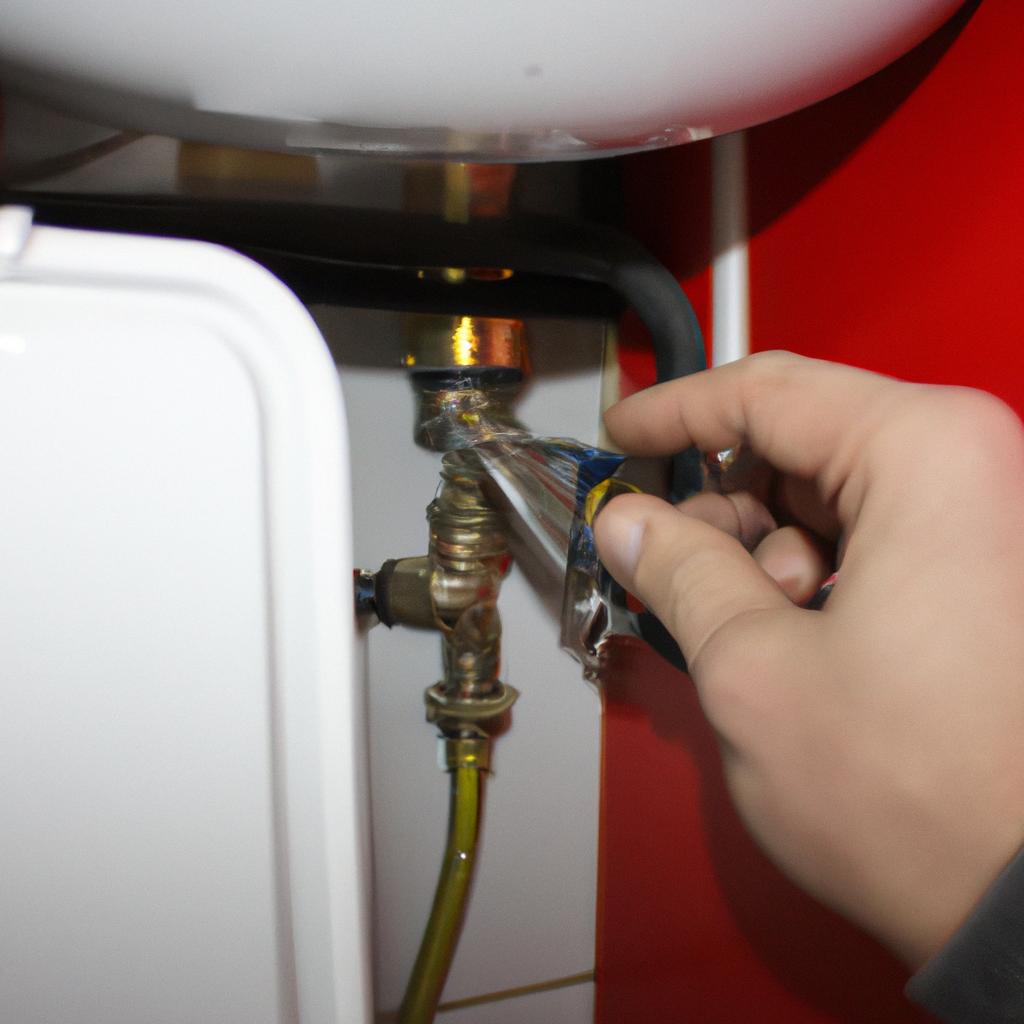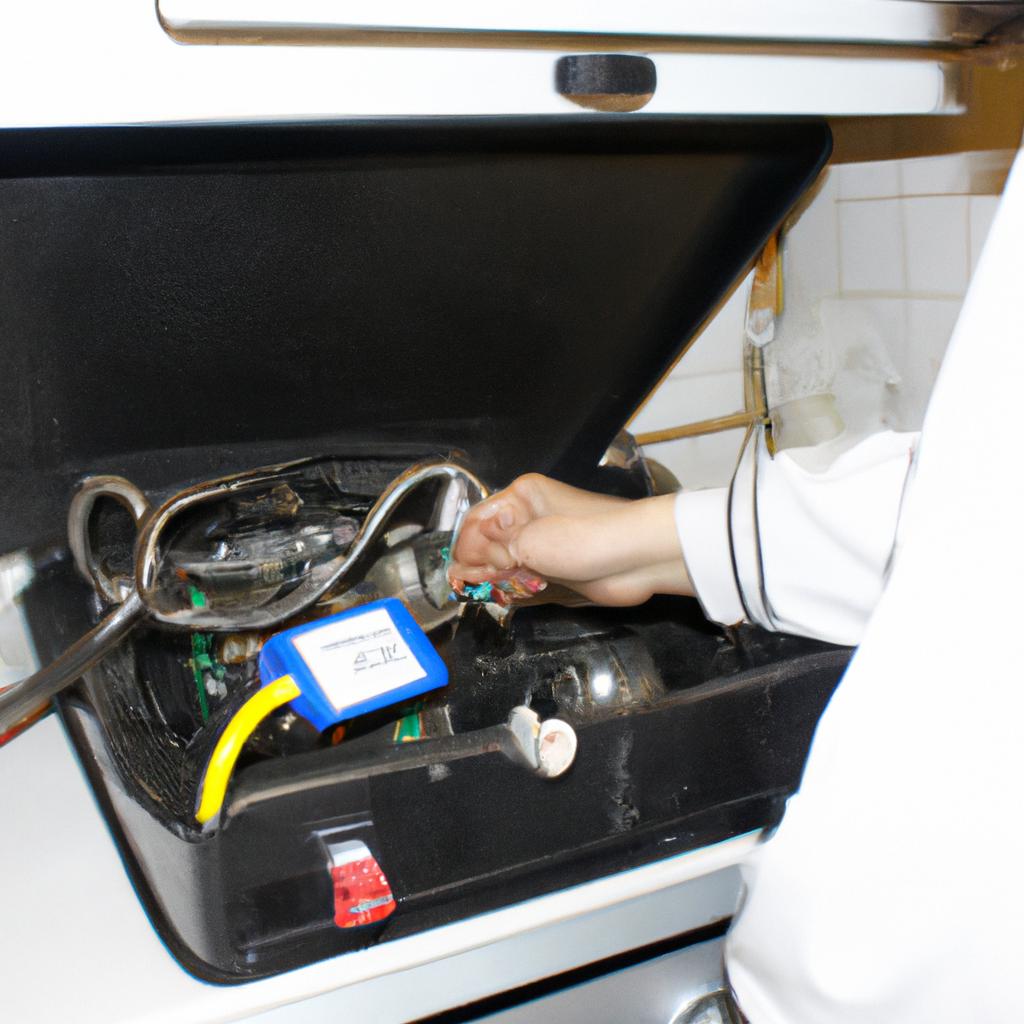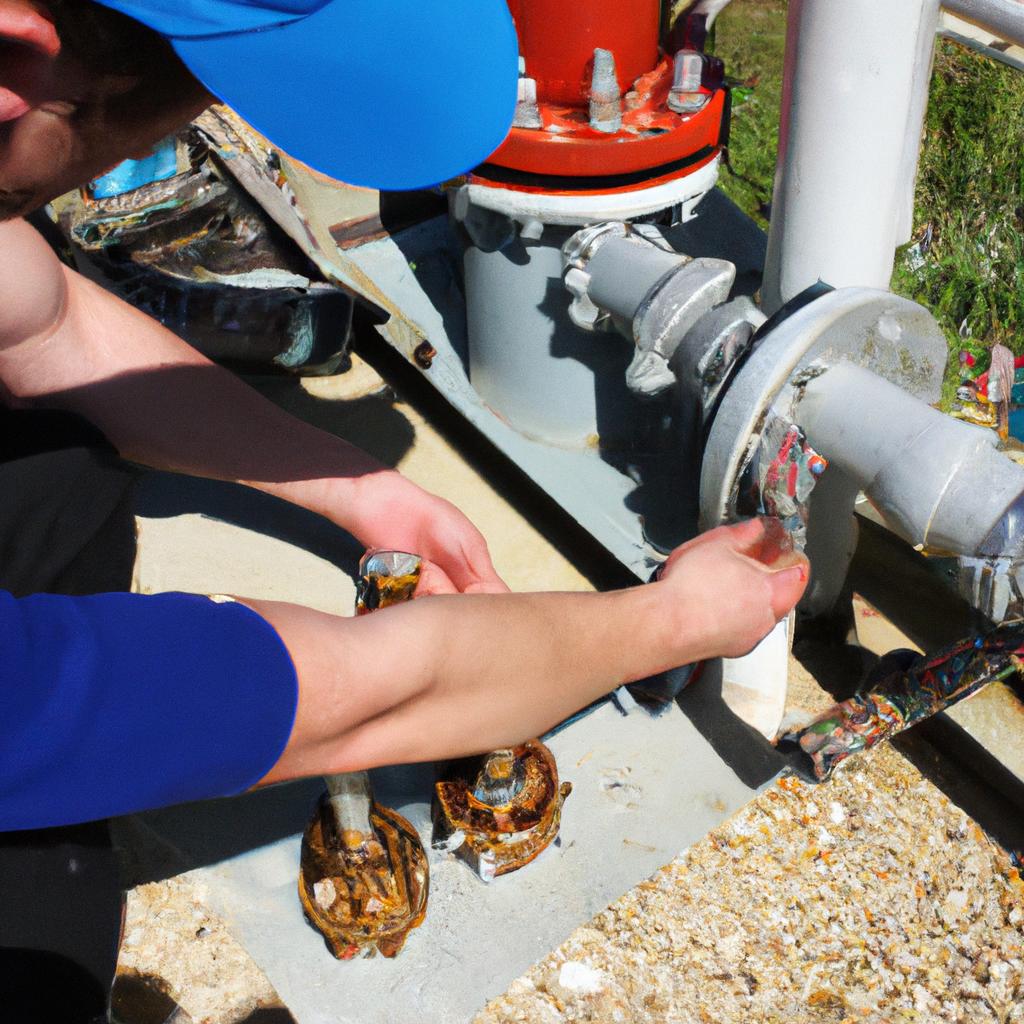In recent years, there has been a growing concern regarding the safety of gas appliances, boilers, and stoves. The combustion process in these devices produces flue gases that contain various toxic substances such as carbon monoxide (CO) and nitrogen oxides (NOx). These harmful emissions can pose serious health risks to individuals if not properly monitored and controlled. To ensure the safety and compliance of these devices, strict regulations have been put in place requiring the use of flue gas analyzers for regular testing and maintenance.
For instance, consider a hypothetical case study where an improperly maintained gas boiler caused a family to experience symptoms of carbon monoxide poisoning. In this situation, the lack of awareness about the potential dangers associated with faulty combustion led to severe consequences for the household members. This example highlights the crucial role played by flue gas analyzers in preventing such incidents by accurately measuring and analyzing the composition of flue gases emitted from gas appliances, boilers, and stoves. By adhering to specific regulations governing their usage, it is possible to mitigate risks effectively and safeguard both human health and property.
Understanding the purpose of flue gas analyzers
Understanding the Purpose of Flue Gas Analyzers
Imagine a scenario where a family purchases a new gas stove for their kitchen. Excited about their new appliance, they begin cooking meals and enjoying the convenience it offers. However, unbeknownst to them, there is a hidden danger lurking within their home—the potential release of harmful gases during the combustion process. To ensure the safety of individuals and comply with regulations, the use of flue gas analyzers becomes crucial.
The Importance of Safety Regulations:
Gas appliances such as boilers and stoves are widely used in households and commercial settings alike. While these appliances provide numerous benefits, they also pose risks if not properly maintained or monitored. The combustion process in these appliances releases various byproducts, including carbon monoxide (CO) and nitrogen dioxide (NO2), both known to be hazardous to human health.
To mitigate the risks associated with gas appliances’ emissions, regulatory bodies have established safety standards that manufacturers must adhere to. These standards include strict guidelines on exhaust ventilation systems and flue gas analysis testing. By employing flue gas analyzers, professionals can accurately measure and monitor pollutant levels emitted from gas appliances.
- Ensuring the well-being of occupants
- Reducing exposure to harmful gases
- Preventing fatal incidents caused by faulty appliances
- Promoting overall indoor air quality
| Safety Concerns | Impact |
|---|---|
| Carbon Monoxide | Health issues ranging from headaches to death |
| Nitrogen Dioxide | Respiratory problems such as asthma exacerbation |
| Combustible Gases | Fire hazards leading to property damage |
| Poor Ventilation | Mold growth and reduced air quality |
Importance of Accurate Measurements for Gas Appliances:
By utilizing flue gas analyzers, professionals can assess the performance of gas-powered devices in terms of fuel efficiency and safety compliance. These instruments measure the concentration of gases emitted during combustion, providing essential data for evaluating appliance functionality.
Accurate measurements obtained through flue gas analysis enable technicians to identify potential issues such as incomplete combustion or improper fuel-to-air ratios. Timely detection and resolution of these problems can prevent further damage to appliances, reduce energy consumption, and ensure that harmful pollutants are not released into the environment.
With an understanding of the purpose and importance of flue gas analyzers established, we now delve into the various safety regulations surrounding gas appliances in our subsequent section on “Importance of accurate measurements for gas appliances.”
Importance of accurate measurements for gas appliances
Understanding the purpose of flue gas analyzers is crucial for ensuring the safety and compliance of gas appliances, boilers, and stoves. By accurately measuring and analyzing the composition of exhaust gases, these devices play a vital role in preventing potential hazards associated with improper combustion. To illustrate the significance of this equipment, let’s consider a hypothetical scenario involving a residential heating system.
Imagine a homeowner who recently installed a new gas boiler to heat their home efficiently. Unbeknownst to them, however, there was an issue with the installation that resulted in incomplete combustion and increased carbon monoxide (CO) emissions. Without using a flue gas analyzer to measure these harmful gases, it would be challenging to identify this problem before it becomes life-threatening.
To ensure safe operation and comply with regulations, utilizing flue gas analyzers is essential. Here are some key reasons why accurate measurements are important:
- Safety: Identifying excessive levels of CO or other toxic gases allows immediate action to be taken to protect occupants from potential health risks.
- Efficiency: Analyzing flue gases helps optimize combustion efficiency by adjusting fuel-to-air ratios, reducing energy consumption, and saving costs.
- Environmental Impact: Monitoring emissions aids in minimizing air pollution caused by incomplete combustion or unburned hydrocarbons.
- Compliance: Flue gas analysis ensures adherence to local regulatory standards and guidelines regarding emission limits.
Let us now delve into how flue gas analyzers achieve this through precise measurements. The following table provides an overview of common parameters measured by these instruments along with their corresponding importance:
| Parameter | Importance |
|---|---|
| Carbon Monoxide (CO) | Toxic gas; high concentrations can cause serious health issues |
| Oxygen (O2) | Essential for complete combustion; low oxygen levels indicate inefficiency |
| Carbon Dioxide (CO2) | Indication of proper burner adjustment; elevated levels may suggest incomplete combustion |
| Flue Gas Temperature | Provides insights into heat transfer efficiency and potential issues with heat exchangers |
In summary, flue gas analyzers are indispensable tools for ensuring the safety, efficiency, environmental impact, and compliance of gas appliances. By accurately measuring key parameters such as CO, O2, CO2, and temperature, these devices enable prompt actions to be taken in case of any anomalies. Now let’s explore the key factors one should consider when selecting a flue gas analyzer.
Transitioning to the subsequent section regarding “Key factors to consider when choosing a flue gas analyzer,” it is essential to carefully evaluate various aspects before making an informed decision about which device best suits your needs.
Key factors to consider when choosing a flue gas analyzer
Accurate measurement of flue gases is crucial in ensuring the safety and efficiency of gas appliances such as boilers and stoves. Let’s explore some key requirements that need to be considered when using a flue gas analyzer.
To illustrate the significance of these requirements, let’s consider a hypothetical scenario where a homeowner notices an unusual smell coming from their gas stove. Concerned about potential hazards, they decide to use a flue gas analyzer to assess the combustion process and identify any possible issues.
Firstly, it is essential for a flue gas analyzer used with gas appliances to comply with safety regulations. This ensures that the device meets industry standards and can accurately measure critical parameters like carbon monoxide (CO) levels, temperature differentials, oxygen (O2) content, and exhaust emissions. Compliance with regulations provides peace of mind by minimizing risks associated with improper combustion or leaks within the appliance.
Secondly, ease of use plays a significant role in selecting a suitable flue gas analyzer. A user-friendly device not only simplifies operation but also reduces the chance of errors during measurements. Features such as clear displays, intuitive interfaces, and comprehensive instructions contribute to efficient analysis while enhancing overall user experience.
Thirdly, reliability is paramount when working with potentially hazardous gases. The chosen flue gas analyzer should have robust construction and proven accuracy under various operating conditions. Regular calibration checks should be performed to ensure consistent performance over time.
Lastly, data management capabilities are worth considering when selecting a flue gas analyzer. Integration with software applications or mobile devices allows for convenient storage and analysis of measurement results. Some advanced analyzers even offer real-time monitoring options that provide immediate feedback on combustion quality.
In summary, selecting a flue gas analyzer that complies with safety regulations, offers ease of use, demonstrates reliability, and provides efficient data management capabilities is crucial for ensuring the accurate assessment of gas appliance combustion processes. In the following section, we will delve into the importance of complying with local and national regulations to further emphasize the significance of these requirements.
Ensuring compliance with local and national regulations
Case study:
To illustrate the importance of complying with local and national regulations regarding flue gas analyzers, let’s consider a hypothetical scenario. Imagine a residential building equipped with multiple gas appliances, including boilers and stoves. The building owner, unaware of the safety implications, neglects to regularly monitor and analyze the flue gases emitted from these appliances. As time goes on, this oversight leads to an undetected buildup of harmful gases, posing serious health risks to the occupants.
Compliance with local and national regulations pertaining to flue gas analysis is crucial for ensuring the safety of both individuals and property. To achieve compliance, here are some key requirements that need to be considered:
- Certification: Flue gas analyzers must meet specific certification standards set by regulatory bodies. These certifications validate the accuracy and reliability of the analyzer in measuring critical parameters such as carbon monoxide (CO), nitrogen oxide (NOx), sulfur dioxide (SO2), oxygen (O2) levels, among others.
- Sampling Methods: Proper sampling methods play a vital role in obtaining accurate readings. Depending on the type of appliance being analyzed, different sampling techniques may be required. It is important to follow prescribed procedures when extracting samples from flues or exhaust pipes.
- Calibration Frequency: Regular calibration ensures that flue gas analyzers maintain their accuracy over time. Manufacturers often provide guidelines on recommended calibration intervals based on usage patterns or other factors affecting performance.
- Reporting Standards: Clear reporting standards enable effective communication between stakeholders involved in monitoring flue gases. Compliance may require adherence to specific protocols for documenting test results, including detailed records of measurements taken and any corrective actions implemented.
By adhering to these requirements, building owners can ensure not only compliance but also enhance overall safety measures within their premises.
The following emotional bullet point list highlights why compliance with regulations is essential:
- Protects inhabitants from the dangers of toxic gases
- Prevents potential fires or explosions caused by faulty gas appliances
- Mitigates health risks associated with poor air quality indoors
- Demonstrates a commitment to safety and responsible property management
Emotional Table:
| Compliance Benefits | Emotional Response |
|---|---|
| Ensures peace of mind | Safety |
| Protects loved ones | Security |
| Promotes a healthy environment | Well-being |
| Complies with legal obligations | Responsibility |
In summary, compliance with local and national regulations regarding flue gas analyzers is imperative for maintaining safe environments. By meeting certification standards, following proper sampling methods, calibrating regularly, and adhering to reporting protocols, building owners can ensure the well-being of occupants and demonstrate their commitment to safety. Next, we will explore the significance of proper maintenance and calibration of flue gas analyzers in sustaining accurate readings.
Proper maintenance and calibration of flue gas analyzers
Ensuring Compliance with Local and National Regulations
To illustrate the importance of adhering to local and national regulations regarding gas appliances, boilers, and stoves safety, let’s consider a hypothetical scenario. Imagine a homeowner who recently installed a new gas boiler in their basement without properly following the prescribed guidelines. Due to this oversight, harmful flue gases were not effectively vented out of the house, leading to an accumulation of carbon monoxide (CO) within the living space. This situation poses significant health risks for occupants as exposure to high levels of CO can be fatal.
To prevent such incidents from occurring, it is crucial for individuals and businesses alike to familiarize themselves with the specific requirements outlined by relevant regulatory bodies. These regulations typically cover aspects such as installation procedures, maintenance protocols, emission limits, and safety standards. By ensuring compliance with these rules, one can mitigate potential hazards associated with gas appliances.
Here are some key considerations when aiming for compliance:
- Proper installation: Gas appliances should be installed correctly according to manufacturer specifications and building codes. This includes appropriate positioning, ventilation requirements, and adequate clearance.
- Regular inspections: Routine check-ups carried out by qualified professionals help identify any issues or malfunctions that may compromise safety. Inspections often involve assessing combustion efficiency, checking for leaks or blockages in flue systems, verifying proper functioning of safety devices like pressure relief valves or flame failure detectors.
- Periodic servicing: Ensuring regular maintenance helps maintain optimal performance while minimizing potential risks related to malfunctioning parts or deteriorating components. Servicing involves cleaning burners and heat exchangers, inspecting seals and gaskets for wear-and-tear or leakage points.
- Verification through testing: The use of flue gas analyzers provides accurate measurements of various parameters such as CO levels, oxygen content (%O2), stack temperature (°C), etc., enabling technicians to assess appliance efficiency and ensure emissions are within permissible limits.
By adhering to these guidelines, homeowners and businesses can ensure the safe operation of gas appliances, boilers, and stoves. It is essential to prioritize compliance with local and national regulations to protect both occupants and the environment from potential harm caused by improper installation or maintenance practices.
Transition into subsequent section: Understanding the importance of compliance with safety regulations sets the foundation for comprehending the benefits of using flue gas analyzers for ensuring operational efficiency and safeguarding human health.
Benefits of using flue gas analyzers for safety and efficiency
In the previous section, we discussed the importance of proper maintenance and calibration of flue gas analyzers in ensuring accurate measurements. Now let us delve deeper into this topic by exploring some specific requirements and guidelines for maintaining and calibrating these devices.
One example that illustrates the significance of regular maintenance is a case study conducted by a leading research institute. They analyzed the performance of multiple flue gas analyzers used in residential settings over a period of six months. The findings revealed that units which were not properly maintained exhibited significant inaccuracies in their readings, leading to potential safety hazards for users. This highlights the crucial role that maintenance plays in upholding safety standards.
To ensure reliable and accurate measurements, it is essential to follow recommended practices for maintaining and calibrating flue gas analyzers. Here are four key considerations:
- Regular servicing: Schedule routine inspections and cleaning to prevent buildup of debris or contaminants that could interfere with sensor accuracy.
- Calibration checks: Perform periodic calibration checks using certified reference gases to verify the instrument’s accuracy against known values.
- Sensor replacement: Replace sensors as per manufacturer recommendations or when signs of degradation such as slow response times or erratic readings become apparent.
- Data verification: Cross-reference results obtained from different analyzers during simultaneous testing to identify any discrepancies between instruments.
To further emphasize the importance of proper maintenance, consider the following table showcasing potential risks associated with neglecting regular upkeep:
| Risk | Impact | Mitigation |
|---|---|---|
| Inaccurate readings | Compromises appliance efficiency and user safety | Regular calibration |
| Sensor malfunction | Impedes early detection of dangerous emission levels | Timely sensor replacement |
| False alarms | Disrupts normal operation | Scheduled servicing |
| System failure | Complete breakdown | Comprehensive maintenance plan |
By adhering to these guidelines and investing in regular upkeep, users can ensure the accuracy and reliability of their flue gas analyzers. It is crucial for both safety and efficiency that these devices are properly maintained and calibrated throughout their lifespan.
In summary, this section has discussed the importance of proper maintenance and calibration of flue gas analyzers. We explored a case study highlighting the consequences of neglecting maintenance, followed by four key considerations for maintaining these devices. Additionally, we presented a table illustrating potential risks associated with inadequate upkeep. By implementing recommended practices, individuals can uphold safety regulations while optimizing performance in gas appliances, boilers, and stoves.
 Atlanti Gaz
Atlanti Gaz



